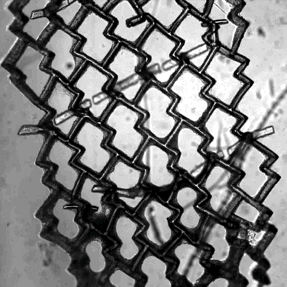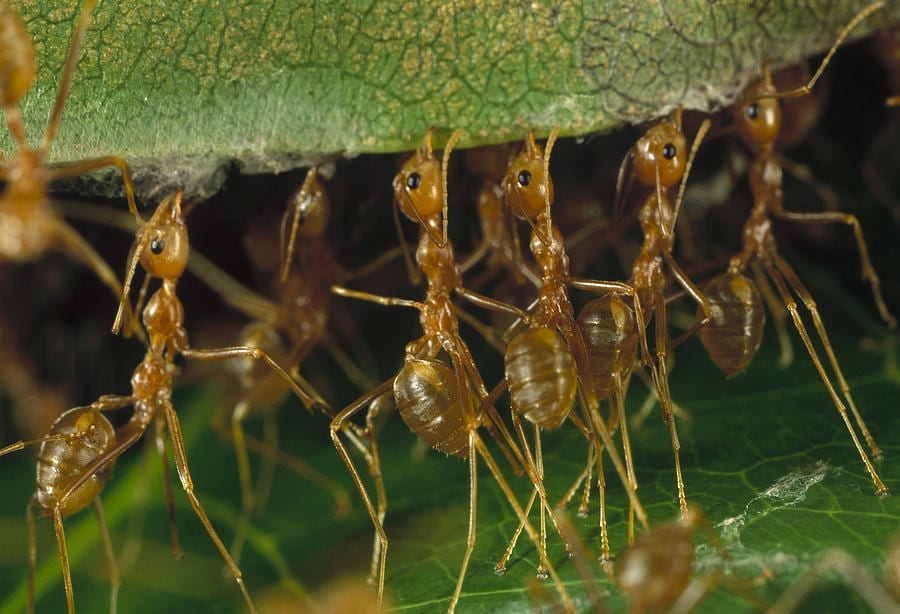
Engineers at the University of Toronto just made assembling functional heart tissue as easy as fastening your shoes. The team has created a biocompatible scaffold that allows sheets of beating heart cells to snap together just like Velcro™.
“One of the main advantages is the ease of use,” says Professor Milica Radisic (ChemE, IBBME), who led the project. “We can build larger tissue structures immediately before they are needed, and disassemble them just as easily. I don’t know of any other technique that gives this ability.”
Growing heart muscle cells in the lab is nothing new. The problem is that too often, these cells don’t resemble those found in the body. Real heart cells grow in an environment replete with protein scaffolds and support cells that help shape them into long, lean beating machines. In contrast, lab-grown cells often lack these supports, and tend to be amorphous and weak. Radisic and her team focus on engineering artificial environments that more closely imitate what cells see in the body, resulting in tougher, more robust cells.
Two years ago, Radisic and her team invented the Biowire, in which heart cells grew around a silk suture, imitating the way real muscle fibres grow in the heart. “If you think of single fibre as a 1D structure, then the next step is to create a 2D structure and then assemble those into a 3D structure,” says Boyang Zhang a PhD candidate in Radisic’s lab. Zhang and Miles Montgomery, another PhD student in the lab, were co-lead authors on the current work, published today in Science Advances.
Zhang and his colleagues used a special polymer called POMaC to create a 2D mesh for the cells to grow around. It somewhat resembles a honeycomb in shape, except that the holes are not symmetrical, but rather wider in one direction than in another. Critically, this provides a template that causes the cells to line up together. When stimulated with an electrical current, the heart muscle cells contract together, causing the flexible polymer to bend.
Next the team bonded T-shaped posts on top of the honeycomb. When a second sheet is placed above, these posts act like tiny hooks, poking through the holes of honeycomb and clicking into place. The concept the same as the plastic hooks and loops of Velcro™, which itself is based on the burrs that plants use to hitch their seeds to passing animals.
Amazingly, the assembled sheets start to function almost immediately. “As soon as you click them together, they start beating, and when we apply electrical field stimulation, we see that they beat in synchrony,” says Radisic. The team has created layered tissues up to three sheets thick in a variety of configurations, including tiny checkerboards.
The ultimate goal of the project is to create artificial tissue that could be used to repair damaged hearts. The modular nature of the technology should make it easier to customize the graft to each patient. “If you had these little building blocks, you could build the tissue right at the surgery time to be whatever size that you require,” says Radisic. The polymer scaffold itself is biodegradable; within a few months it will gradually break down and be absorbed by the body.
Read more: New “Tissue Velcro” could help repair damaged hearts
The Latest on: Artificial tissue
[google_news title=”” keyword=”Artificial tissue” num_posts=”10″ blurb_length=”0″ show_thumb=”left”]
via Google News
The Latest on: Artificial tissue
- Researchers develop genetic plant regeneration approach without the application of phytohormoneson May 1, 2024 at 6:59 am
Artificial regulation of such totipotent cells through plant tissue culture is widely used for plant conservation, breeding, generation of GM species, and scientific research purposes. Conventionally, ...
- Héma-Québec to become exclusive provider of human tissue donations for hospitalson April 29, 2024 at 1:11 pm
In addition to having a monopoly on blood products in the province, Héma-Québec will soon be solely responsible for the distribution of human tissues for all hospitals in Quebec starting December 2024 ...
- Daniel Ek’s Next Act: Full-Body Scans for the Peopleon April 27, 2024 at 5:00 am
The Spotify chief has co-founded a new start-up, Neko Health, that aims to make head-to-toe health scans part of the annual health checkup routine.
- Could AI Help Catch Breast Cancers That Mammograms Miss?on April 25, 2024 at 8:50 pm
Artificial intelligence has reached mammograms. AI mammograms may help improve doctors' ability to detect more breast cancers. But there are drawbacks.
- Researchers create an AI-powered digital imaging system to speed up cancer biopsy resultson April 25, 2024 at 6:55 am
University of Waterloo researchers have invented a digital medical imaging system that significantly improves the cancer detection process to deliver immediate results and enable swift, effective ...
- Advances in mammography among Breast Cancer Update topicson April 24, 2024 at 11:30 am
Advances in breast scanning, include the use of artificial intelligence, are on the agenda for the annual Delaware Breast Cancer Coalition update, ...
- Scientists create artificial cells with capabilities for biomedical advancementson April 24, 2024 at 2:39 am
Researchers at the University of North Carolina , have successfully created artificial cells capable of mimicking natural cellular behaviour ...
- Medtronic launches next-gen surgical aortic tissue valveon April 22, 2024 at 12:09 pm
Medtronic (NYSE: MDT) today announced the launch of its next-generation Avalus Ultra surgical aortic tissue valve.
- Artificial blood: Life saving scienceon April 19, 2024 at 11:52 am
We have traveled to Mars, made working artificial hearts, explored the deepest depths of the Mariana Trench, and sequenced the human genome, and yet, we haven’t been able to make artificial blood. Why ...
- When thoughts flow in one directionon April 18, 2024 at 11:38 am
Contrary to previous assumptions, nerve cells in the human neocortex are wired differently than in mice. Those are the findings of a new study conducted by Charité – Universitätsmedizin Berlin and ...
via Bing News










